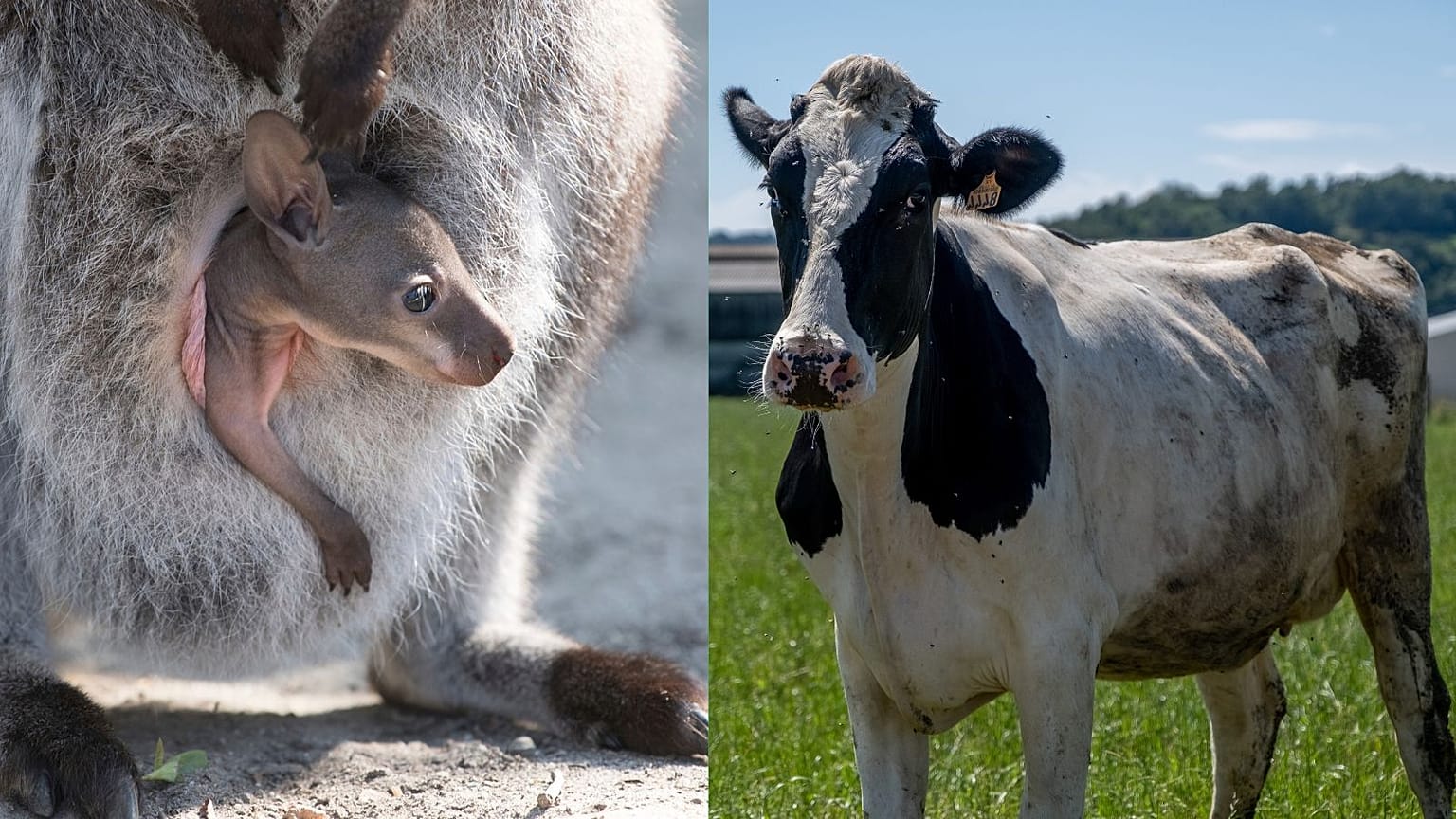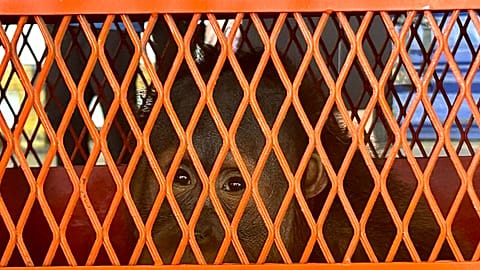Livestock farming is the biggest human-caused source of methane. Scientists have come up with another way to tackle the gas.
Kangaroo poo could be a surprising ally in the fight against methane-spewing cow farts.
It may sound like science fiction from the brain of a 10 year old, but scientists at Washington State University are putting the roo poo to the test.
The researchers added a microbial culture made from baby kangaroo faeces plus a known methane inhibitor to a cow stomach simulator. The result? It produced acetic acid instead of methane.
Unlike the greenhouse gas, acetic acid isn’t emitted as flatulence and actually benefits cows by aiding muscle growth. So it’s something of a win-win situation.
But does it have real-world potential?
How greenhouse gassy are cows?
"Methane emissions from cows are a major contributor to greenhouse gases, and at the same time, people like to eat red meat," says Professor Birgitte Ahring, an author of the newly published research in the journal Biocatalysis and Agricultural Biotechnology.
"We have to find a way to mitigate this problem."
Methane is the second largest contributor to greenhouse gases after CO2, and is around 30 times more potent when it comes to heating up the atmosphere. Livestock farming is the world’s biggest human-caused source of this climate-wrecking gas.
It’s clear that cattle farming at its current scale is unsustainable. But as well as scrutinising the industry, some scientists are looking at how to tackle methane at its biological source.
Where have other methane-combatting measures gone wrong?
Everything from feeding cows seaweed, to fitting them with burp-inhibiting face masks and blasting their dung with artificial lightning has been tried - to varying degrees of success.
Attempts to feed the animals chemical inhibitors to stop methane production have, in the past, been thwarted by methane-producing bacteria becoming resistant to the chemicals.
Researchers have also tried to develop vaccines, reports SciDaily, but a cow's microbiome depends on where it's eating. There are far too many varieties of methane-producing bacteria worldwide for it to be effective.
The interventions can also negatively affect the animals' biological processes.
The WSU researchers study fermentation and anaerobic processes. They designed an artificial rumen - the largest stomach compartment in ruminant animals - to simulate cow digestion.
With many enzymes that are able to break down natural materials, rumens have "amazing abilities," says Ahring.
Where does kangaroo poo come in?
In their simulated stomach, researchers were missing an ingredient that could outcompete the methane-producing bacteria.
After learning that kangaroos have acetic acid-producing, rather than methane-producing, bacteria in their foregut, Ahring got her students to track down some of the marsupials.
Samples from the animals showed that the specialised acetic acid-producing process only occurred in baby kangaroos - not in adults.
As they couldn’t separate out specific bacteria that might be producing the acetic acid, the team used a stable mixed culture developed from the faeces of the baby kangaroo.
First, they had to reduce the methane-producing bacteria in their reactor with a specialised chemical. But after this step, the acetic acid bacteria successfully replaced the methane-producing microbes for several months and kept pace with their growth rate.
After successfully testing their system in the simulated rumen, the researchers hope to try it on real cows in the near future.
"It is a very good culture. I have no doubt it is promising," Ahring says.
"It could be really interesting to see if that culture could run for an extended period of time, so we would only have to inhibit the methane production from time to time. Then, it could actually be a practice."


















